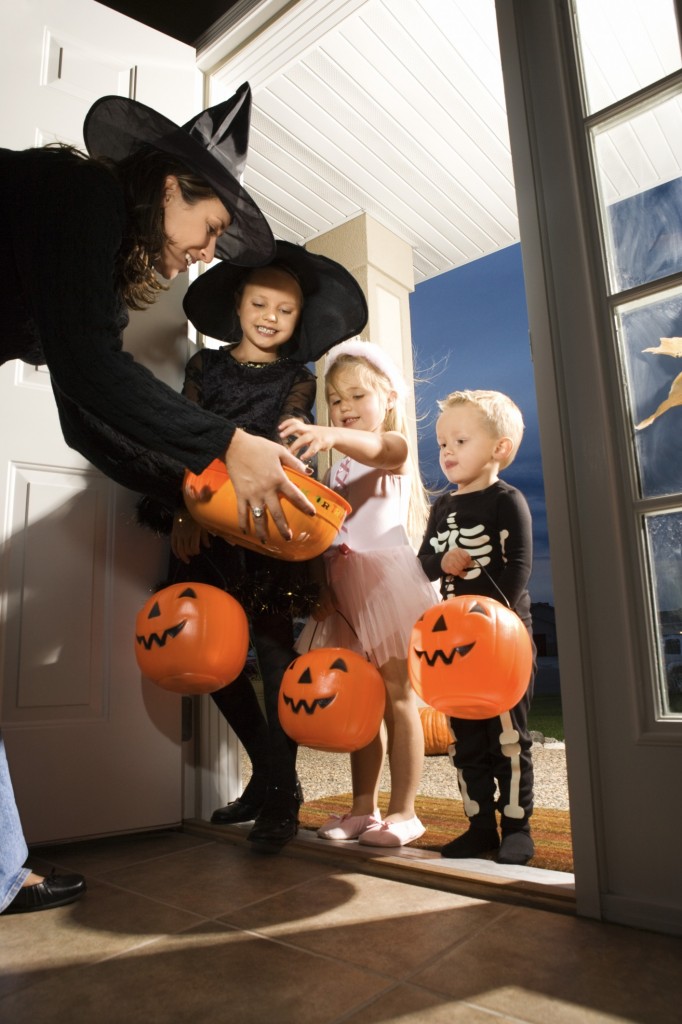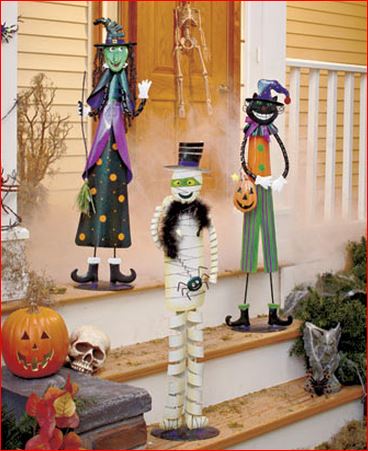6 Curious Facts About Halloween
 Halloween is one reason to look forward to fall — we get dressed up in spooky costumes, go to parties and eat a lot of candy. But the holiday has a rich history… here are six curious facts about Halloween.
Halloween is one reason to look forward to fall — we get dressed up in spooky costumes, go to parties and eat a lot of candy. But the holiday has a rich history… here are six curious facts about Halloween.
Roots What we know as Halloween — the costumes and candy — is very different from how Halloween began. Scholars believe it is rooted in the Gaelic festival to honor the end of summer called “Samhain” (pronounced SAH-win). It was recognized as a time when the boundary between the spiritual world and the mortal world was more fluid. Samhain also coincided with the Christian holiday of All Saints Day which is also referred to as All Hallows Day — Halloween (All Hallows Eve) is a fusion of the Gaelic and Christian holidays.
 Treats There are a few possibilities from which we derive trick-or-treating. Originally, according to Gaelic tradition, people would put food and offerings outside their doors to appease the spirits wandering in the mortal world so they would protect villagers’ livestock. This tradition morphed into a ritual for Scottish kids called “guising.” They dressed up in ragged clothes to blend in with the wandering spirits as they went door-to-door asking for treats in exchange for a trick they could perform. Similarly, in Britain and Ireland children and poor people went door-to-door to trade singing and saying prayers for the dead for “soul cakes.” It was believed eating the cakes freed souls from Purgatory. The tradition was called “souling.”
Treats There are a few possibilities from which we derive trick-or-treating. Originally, according to Gaelic tradition, people would put food and offerings outside their doors to appease the spirits wandering in the mortal world so they would protect villagers’ livestock. This tradition morphed into a ritual for Scottish kids called “guising.” They dressed up in ragged clothes to blend in with the wandering spirits as they went door-to-door asking for treats in exchange for a trick they could perform. Similarly, in Britain and Ireland children and poor people went door-to-door to trade singing and saying prayers for the dead for “soul cakes.” It was believed eating the cakes freed souls from Purgatory. The tradition was called “souling.”
Witches Samhain, where Halloween is rooted, is the highest holy day for witches. Witches are known to be ugly, covered in warts — but this wasn’t always what came to mind when witches were mentioned. According to Raven Grimassi, an author and expert on witches, witches were young and beautiful, but Roman poet Horace wanted to change how the public viewed witches so he depicted them in his writing as ugly old hags.
 Black Cats Originally, these dark felines were either friends of witches or they were witches, depending on who you ask. Popular belief is witches could would turn into black cats to disguise themselves. However, according to Greek mythology, goddess of the underworld, Hecate, had a black cat who was once human. There are two stories on who that cat was. It was either formerly a witch with an incontinence problem or a nurse who angered the Greek goddess Eileithyia — in both scenarios, being turned into a cat was a form of punishment, not a form of disguise.
Black Cats Originally, these dark felines were either friends of witches or they were witches, depending on who you ask. Popular belief is witches could would turn into black cats to disguise themselves. However, according to Greek mythology, goddess of the underworld, Hecate, had a black cat who was once human. There are two stories on who that cat was. It was either formerly a witch with an incontinence problem or a nurse who angered the Greek goddess Eileithyia — in both scenarios, being turned into a cat was a form of punishment, not a form of disguise.
 Jack-O-Lantern The origin of the jack-o-lantern also has several explanations. In Somerset, England, kids march through neighborhoods carrying jack-o-lanterns or “punkies” for Punkie Night (the last Thursday in October). Punkies were lanterns carved from turnips with ugly faces chiseled into them — much like American jack-o-lanterns, only smaller. According to English folklore, women would go looking for their husbands in the pubs using the punkies to light their way. When the husbands saw the lanterns, they thought they were the faces of spirits. When the idea spread to the United States, pumpkins were a plentiful fall fruit and much easier to carve than a turnip so the punkie was replaced by the pumpkin.
Jack-O-Lantern The origin of the jack-o-lantern also has several explanations. In Somerset, England, kids march through neighborhoods carrying jack-o-lanterns or “punkies” for Punkie Night (the last Thursday in October). Punkies were lanterns carved from turnips with ugly faces chiseled into them — much like American jack-o-lanterns, only smaller. According to English folklore, women would go looking for their husbands in the pubs using the punkies to light their way. When the husbands saw the lanterns, they thought they were the faces of spirits. When the idea spread to the United States, pumpkins were a plentiful fall fruit and much easier to carve than a turnip so the punkie was replaced by the pumpkin.
But where we get the name “jack-o-lantern” is from Irish folklore. According to history.com, a man named Stingy Jack was a trickster and he hoodwinked the devil into promising to not claim his soul when he died. As the legend goes, when Stingy Jack died, God didn’t want such a prankster in heaven, and the devil kept his promise to not take his soul… so he roams Purgatory with a lump of burning coal in a punkie to light his way. From then on, he was known as Jack of the Lantern — and the Irish shortened it to Jack O’Lantern.
 Bats According to Popular Science, the history on the connection between bats and Halloween is murky, but the Samhain festival is at the root of one of the theories. During the festival, there were bonfires which attracted insects that bats eat, so bats were indirectly attracted to the bonfires. Bats are nocturnal, flying mammals — for people to see them out and about was unusual, which feeds the mystery surrounding these creatures and Halloween.
Bats According to Popular Science, the history on the connection between bats and Halloween is murky, but the Samhain festival is at the root of one of the theories. During the festival, there were bonfires which attracted insects that bats eat, so bats were indirectly attracted to the bonfires. Bats are nocturnal, flying mammals — for people to see them out and about was unusual, which feeds the mystery surrounding these creatures and Halloween.
How celebrating Halloween started and how we celebrate it today are very different. Though the reasons and traditions have evolved over the centuries, it remains a favorite fall festivity.





